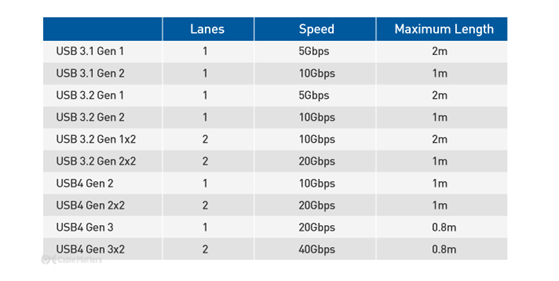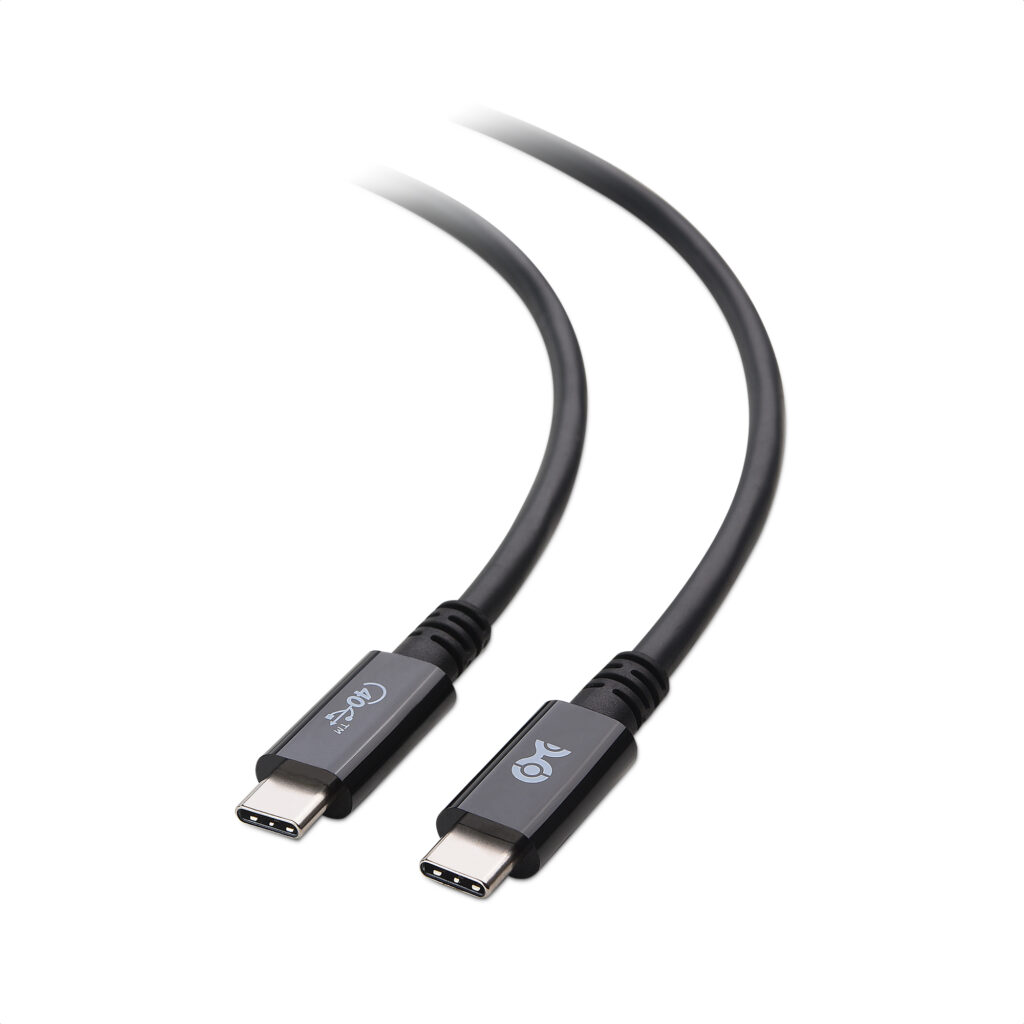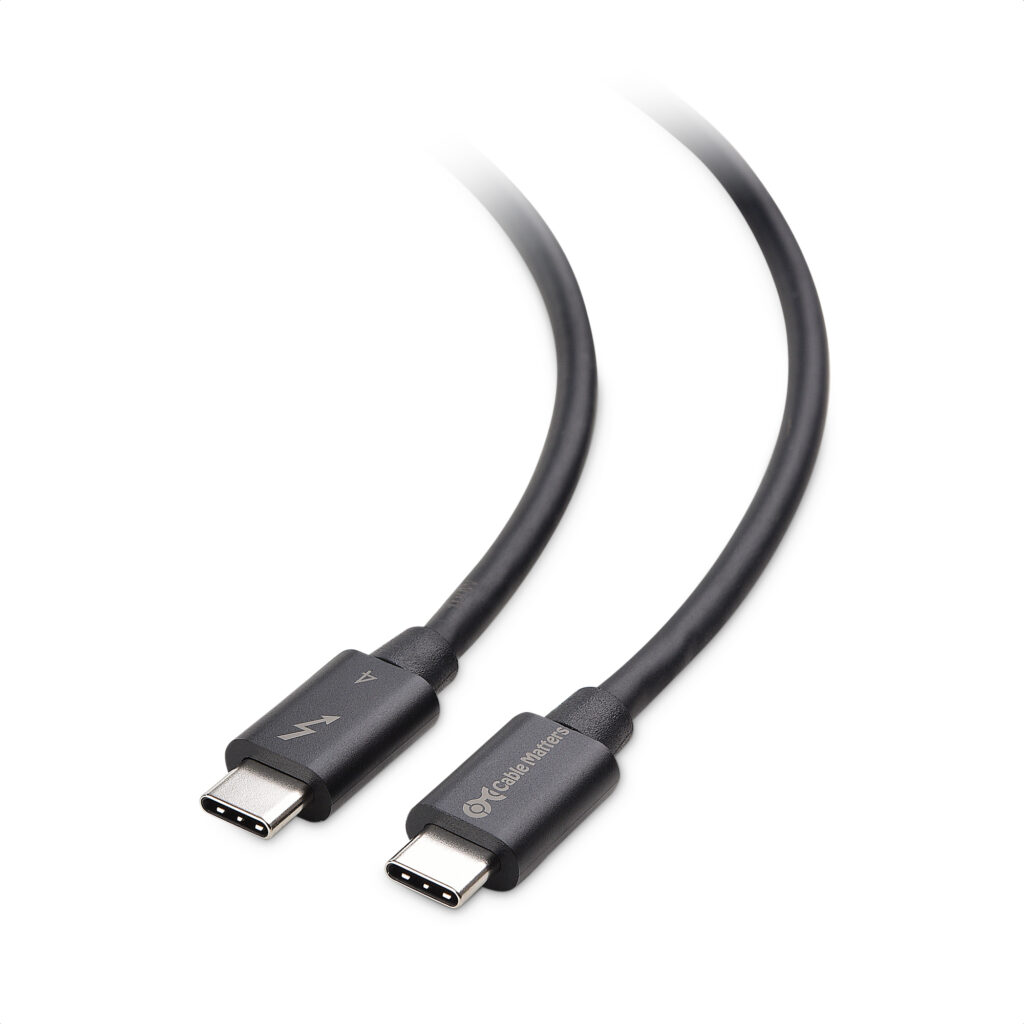USB-C is a standard connection for data transfer and power supply via a single cable. The USB-C connection was created by the USB Implementers Forum (USB-IF), a group of companies that has developed, certified and maintained the USB standard over the years. USB-IF brings together more than 700 companies, including Apple, Dell, HP, Intel, Microsoft and Samsung.
This widespread adoption by large dogs is important because it is part of why USB-C is so easily accepted by computer manufacturers. Compare that to previously promoted (and improved) Lightning and MagSafe connections from Apple, which have limited reception outside of Apple products and have become useless due to a small USB feature-C.
A Brief History of USB
During the formation of USB-IF in the late 1990s, modern computers began to flourish, but the interface technology between machines and peripherals lagged. USB-IF went into the creation of a standard connection type that replaced multiple serial and parallel ports, as well as a proprietary connection type that was interrupted on multiple machines. Oh, the USB port we know with was born.
Various protocol upgrades were released during the year, which increased data rates and power options, as well as new connector shapes and sizes. At the time of USB-C development in 2014, there were 11 different types of USB connections, each of which was developed for specific applications, but were often physically incompatible with each other. For example, if you need to charge your smartphone, you can get a Micro USB cable, connecting a printer requires a USB Type-B cable, while uploading photos from a digital camera requires a Mini-B cable. USB-IF reworked the problem they decided to solve.
Is USB-C Like Micro USB?
The USB-C connection is at first glance comparable to a micro-USB connection, although it is more oval in shape and slightly thicker to meet its best feature: flip-flop.
Like Lightning and MagSafe, the USB-C connection has no up or down orientation. Align the connection correctly and you no longer need to reverse it to connect it; the “right way” is always there. Standard cables also have the same connector at both ends, so you don’t have to know which end to go. This is not the case with all the USB cables we have used in the last 20 years. You usually have several connectors at each end.
USB-C Ambitions
So what is USB-C and what problems can it solve? First of all, it is set so that all previous USB connections are obsolete. What is the use of USB-C? USB-C is already accepted by many computers, tablets and smartphones, as well as peripherals such as monitors, flash drives and hard drives. All indications point to this trend, which is partly due to the sleek USB-C profile, which allows it to be implemented on thinner and more capable devices. In fact, USB-C has the potential to become the standard, even outside of consumer electronics, as it is beginning to be adopted by the automotive charging and in-car data industries and has the potential to become home appliances. such as electric razors. .
If you have trouble connecting a standard USB cable to a wall charger in the dark, turn the cable over several times to find the correct orientation, then this is another great thing. USB-C connections are truly reversible, which means you can plug them in any orientation. And although there are USB-C cables at one end and another connection at the other, we can expect USB-C to USB-C cables to be more common than expected in the future.
What are the Benefits of USB-C?
That USB-C is smart, reversible and replaces all old types of connections, but what can USB-C do? The USB-C connection has 24 pins compared to 9 pins in the previous generation USB 3.0. These extra pins provide more power, data and video. While USB 3.0 ports and their 9-pin ports are locked at 5 Gbps, USB-C can support up to 40 Gbps depending on the protocol. Here comes the confusing part.
While USB Type-C refers to a reversible connection type, bandwidth capability refers to protocol support from USB 2.0 at just 480 Mbps to 40 Gbps with a Thunderbolt 3, Thunderbolt 4 or USB4 cable. Some smartphones and tablets have USB-C 2.0 ports, which are great for charging and syncing. At the other end of the spectrum, you’ll find Thunderbolt 3 ports on high-end computers like the MacBook Pro.

Most USB-C ports on your computer support the USB 3.1 Gen 2 standard (also called USB 3.2 Gen 2×1), which supports 10 Gbps. To put it all in perspective, the entire HD movie can be transferred to USB-C 3.1 Gen 2 (10 Gbps) in approximately 30 seconds. From here you can find out how fast USB 2.0 transfer is and how fast the Thunderbolt 3 / USB 4 40 Gb / s flash is.
USB-C is Faster, is that it?
Any added USB-C bandwidth support, whether 10, 20 or 40 Gbps, is simply not good for transferring files at incredible speeds. Another advantage of USB-C is that it also supports alternative modes such as non-USB protocols such as DisplayPort or Thunderbolt 3. While earlier versions of USB can only support data, alternative modes can do things like send video via USB – C cables. You are also not limited to one view. Depending on the capabilities of your computer’s USB-C port, up to 3 monitors can be connected using the USB-C adapter. However, you need to be careful because not all USB-C devices support DisplayPort Alternate Mode. USB-C smartphones rarely support this, most newer laptops, but not necessarily for dual or triple display. For example, the MacBook Pro can only handle two monitors via the Thunderbolt 3 adapter because it does not support Multi-Stream Transport or MST (another protocol). Fortunately, the Thunderbolt 3 ports are clearly marked with a logo that looks like lightning, so you can know if you have one.
To find out the capabilities of a non-Thunderbolt 3 USB-C port, you can view the technical specifications of your computer. If it is referred to as supporting USB-C as “alternative mode” or “DisplayPort”, then this port supports at least one external monitor. The specifications should also state which USB standard it supports so that you can know the maximum speed. Computers that support USB 3.1 Gen 2 with alternate mode have no problem running a 4K monitor with other USB devices. Accessory manufacturers, such as Cable Matters, often have a number of different multiport adapters as port drives that use the full USB-C bandwidth in various ways. For example, one adapter can operate two 4K 30Hz monitors but has USB 2.0 ports, while the other can support one 4K 30Hz monitor and has USB 3.0 and Gigabit Ethernet ports. The possibilities are endless. The growing popularity of USB-C will make it easier for you to find the right accessory for your needs.
Can you Charge a Laptop with USB-C?
Yes! This is another big advantage of USB-C. It has been previously described how the purpose of USB-IF is to eliminate multiple ports and ports for different purposes. It can also be used for charging cables. In the past, small devices such as cell phones or headphones could be charged using USB cables (you can have a charger full of micro-USB cables from any device you have). The maximum support provided by the USB charging protocol is 5V. There are a number of proprietary protocols without USB support, but this creates a scene of confusing charging patterns and accessories. USB-C Power Delivery expands charging specifications from 20V access to 5A or up to 100W charging. This huge increase allows large devices, such as laptops, to be charged using USB-C. For example, a 15-inch MacBook Pro charges 87W. For charging above 60 W, use the marked USB-C electronic power cable, if marked.
Therefore, USB-C can charge your larger devices, such as laptops, but does USB-C generally charge faster? Usually the answer, but it depends on how it is done. High-end smartphones such as the iPhone and Google Pixel use USB PD support for higher voltages, so they can charge faster than older phones. The downside is that you have to spend more money on a high-voltage USB-C charger and, in the case of the iPhone, a USB-C flash cable. On the other hand, most USB-C cables must support charging up to 60W, just make sure they are from reputable brands. Better still, make sure they are from the USB-or membership market or cable items.
Although you may not notice this latest feature very quickly, the latest Power Delivery 3.0 standard supports the Programmable Power Supply Protocol (PPS). PPS mode allows you to supply more power to a single device instead of a constant power flow. Your phone’s lithium-ion battery will thank you for this, as this strategy allows you to charge it at the best speed while helping to extend battery life.
USB-C Features Recap
If that’s not enough, it’s still important to keep in mind that all of these things happen at the same time through a single computer cable / port. With the right docking station, you can connect all your spare monitors, USB devices, memory cards, hard drives and Ethernet And charge your laptop up to 100W – talk about a clean desktop! The best part is that in most cases it just works. Because USB-C now supports alternate modes, you’ll begin to experience more powerful docking stations that work without additional software or drivers, which can slow down your computer.
Given the intense bandwidth, power options, and alternative modes already available with USB-C, you may be wondering how it could be better. One of the key areas we are currently focusing on is effectively extending the length that USB-C can do. There are only a few active USB-C cables on the market that allow full USB-C functionality in a single cable length of up to 3m. USB-IF also announced the latest standard, USB4, in August 2019. More in the future, but the bottom line is that allows native support for Thunderbolt 3 and a transfer rate of 40 Gbps. Fortunately, the USB-C feature set is powerful enough to keep even the most demanding users connected. Finally, we have a truly universal connection that we enjoy for years.
Which USB-C Cables to Buy?
Now use USB4 cables, probably the most important USB-C standard – what makes USB4 Wire all the USB-C things. Wires full quickly repeat any other USB-C-waste, making these conductors ideal for future peripheral devices. Cable entries started the first USB cable or Certified USB4 in the 2021 cable.

If you’re looking for a USB-C cable to do it all, the Cable Matters Thunderbolt™ 4 Cable is the only USB-C cable you’ll need. It supports the latest 40Gbps Thunderbolt 4 standard, is fully compatible with USB4, and fully backward compatible with all other USB-C modes.

Do You Need USB-C?
The presence (or left) USB C-gate is increasing to think when buying a PC. If you buy ultrathin laptop, it has almost at least one USB C port that automatically increases the ecosystem. If you have a lot of desktops, you are sure that you also see the docks, with at least one of Lingen handling and most desktops and game board computers. Some desktops and PC cases on PC PUSERMARKET also insert one front panel. However, Desktop DIY should occur with a US-C-gateway for the PC case or the highest possible specific mob-C connection, which would indicate.)
Even if you don’t need a USB C now soon. We’re just looking at what USB-C can do, but one thing’s for sure: the new generation of cross-platform connections will quickly replace the old guard, just as the original USB standard replaced Apple Desktop Bus (ADB), FireWire, parallel, PS / 2, SCSI and serial ports on Macs and PCs. USB-C is actually a port that will control them all.
